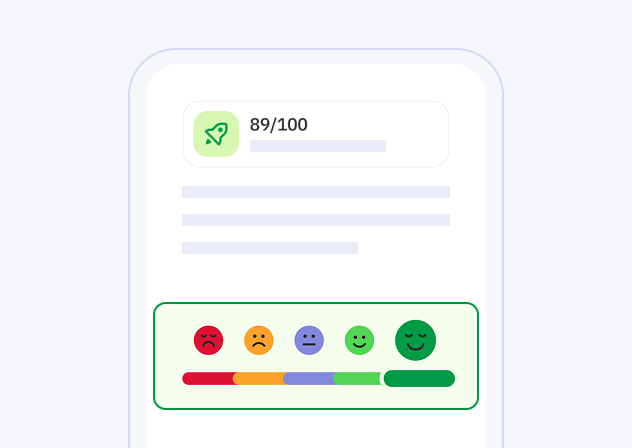Beginner's Guide To American Sign Language
Have you ever wondered how millions of people around the world communicate effortlessly without speaking a word? Meet American Sign Language (ASL)—a dynamic, expressive, and rich visual language used by the Deaf and hard-of-hearing communities across North America. ASL not only allows you to communicate effectively but can also enrich your life through connection and understanding. Whether you're interested in communicating better with Deaf family or friends, adding a valuable skill to your resumé, or simply exploring a beautiful new language, you've arrived at the right place. In this Beginner's Guide to American Sign Language, we'll explore the basics of ASL, guide you through key concepts and vocabulary, and provide resources to help you become a proficient signer.

The most efficient way to learn a language
Try Talkpal for freeWhat Exactly is American Sign Language (ASL)?
ASL is a unique visual-gestural language that has its own grammar, structure, syntax, and cultural nuances. Unlike English, it relies heavily on physical expressions, gestures, facial cues, and hand motions. Developed organically by Deaf communities in the United States and parts of Canada, ASL provides accessibility, inclusion, and communication to an estimated half a million Deaf individuals and millions more learners.
The Benefits of Learning American Sign Language
Let’s start by exploring the wonderful reasons why learning ASL is beneficial for everyone:
Build Inclusive Communities
Learning ASL helps foster inclusion and compassion towards Deaf and hard-of-hearing individuals. It enables conversations beyond spoken words and promotes a deeper, authentic connection the Deaf community.
Boost Your Brain Power
ASL engages visual, spatial, and motor parts of the brain, offering cognitive benefits similar to bilingualism. Learning sign language has been linked to enhanced memory, creativity, problem-solving abilities, and concentration.
Enhance Communication Skills
ASL sharpens non-verbal communication, making you more perceptive of facial expressions, body language, and visual cues. These skills can significantly improve your communication in spoken languages as well.
New Career Opportunities
Knowledge of ASL can make you more employable in various fields like education, healthcare, social work, customer service, and therapy. Companies value employees who can effectively cater to diverse customer bases.
5 Essential ASL Basics for Beginners
Now, let’s start signing! Here’s a summary of some foundational aspects for beginners to focus on:
Fingerspelling:
The ASL alphabet involves manually spelling words letter by letter, typically used for names and proper nouns. It forms the crucial basis for learning vocabulary.
Numbers:
ASL numbers use specific finger gestures and hand positions. Master numbers 1-10 first as a foundation to build larger numbers and numerical expressions.
Basic Sign Vocabulary:
Start with everyday vocabulary – greetings, farewells, basic questions, polite phrases, and important conversational words like “thank you,” “please,” “sorry,” “yes,” “no,” etc., to begin engaging in practical conversations.
Facial Expression and Body Language:
Facial expressions convey grammar, emotions, and conversational context in ASL. Practice incorporating these subtle yet essential aspects into your message.
Basic Grammar and Sentence Structure:
ASL sentence structure usually follows Topic-Comment structure. For example, English: “I went to the store.” ASL: “Store, I go finish.” Recognizing this pattern helps beginners express simple thoughts correctly and understandably.
Tips to Effectively Learn ASL
- Practice daily: 15–20 minutes a day can significantly improve confidence.
- Use visual aids: Follow engaging video tutorials to enhance comprehension.
- Find conversation partners: Engage regularly with native or proficient ASL users.
- Use mobile apps: Different Apps offer user-friendly learning opportunities on-the-go, offering diverse methods to practice at your convenience.
- Be patient and persistent: Language learning is a journey; celebrate every small success!
Popular Apps and Resources to Get Started
- Gallaudet University online resources
- Lifeprint.com and ASL Pro
- YouTube tutorials by Deaf educators and creators
- Community classes at local education centers and schools
- Start Your ASL Adventure Today!
With patience, enthusiasm, and consistent practice, you’ll be amazed at how quickly you become confident using ASL. Embark on this journey, connect with Deaf culture, and open a door to more meaningful conversations and friendships.
Conclusion
Now that you have a comprehensive guide to starting your journey into American Sign Language, take the first step today. Open up a wonderful new communication channel, increase inclusion and accessibility, and celebrate the rich Deaf culture. With ASL at your fingertips, you’re stepping into a vibrant and engaging world of visual conversations!
The most efficient way to learn a language
Try Talkpal for freeFrequently Asked Questions
Is ASL universal?
Is ASL easy to learn for beginners?
How long does it take to become fluent in ASL?
Does ASL have its own grammar rules?
Why is facial expression important in ASL?
The talkpal difference

Immersive conversations
Each individual learns in a unique way. With Talkpal technology, we have the ability to examine how millions of people learn simultaneously and design the most efficient educational platforms, which can be customized for each student.

Real-time feedback
Receive immediate, personalized feedback and suggestions to accelerate your language mastery.

Personalization
Learn via methods tailored to your unique style and pace, ensuring a personalized and effective journey to fluency.







